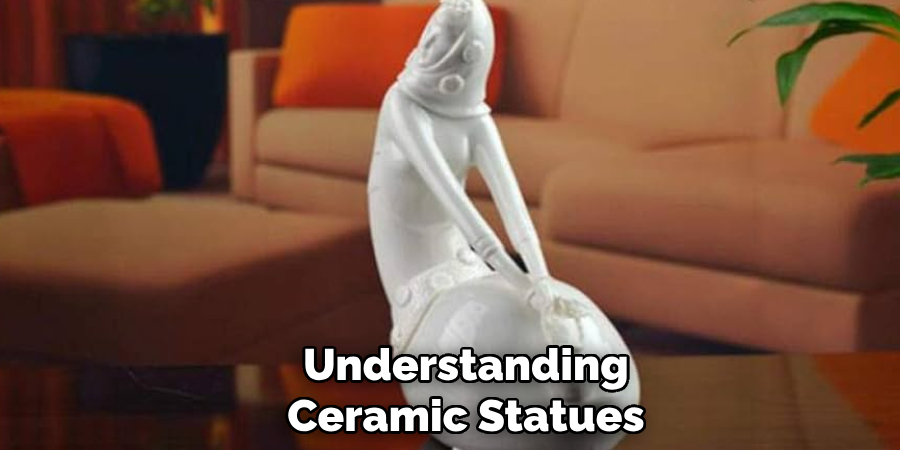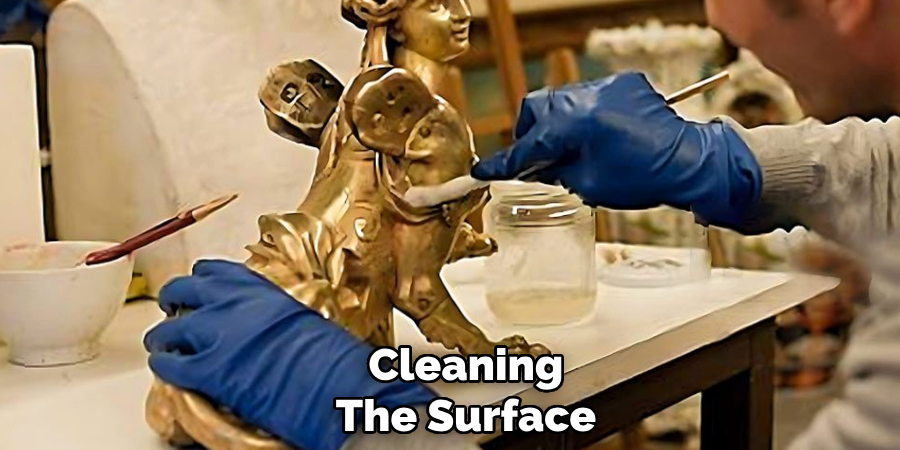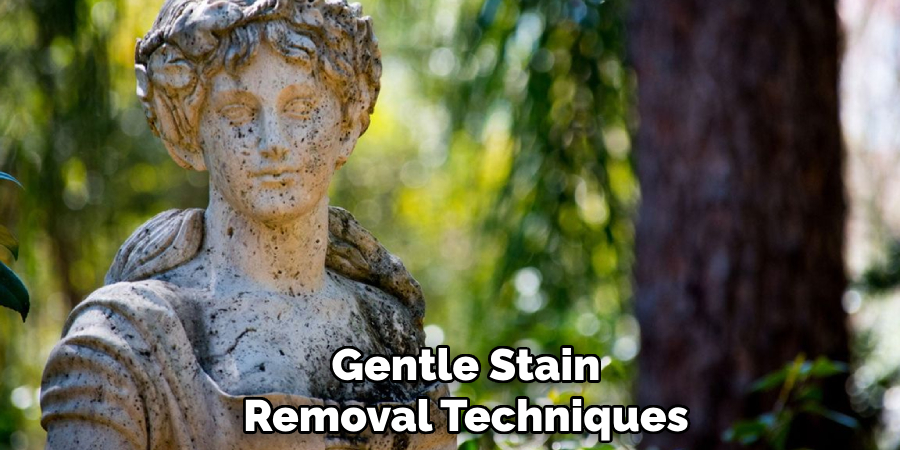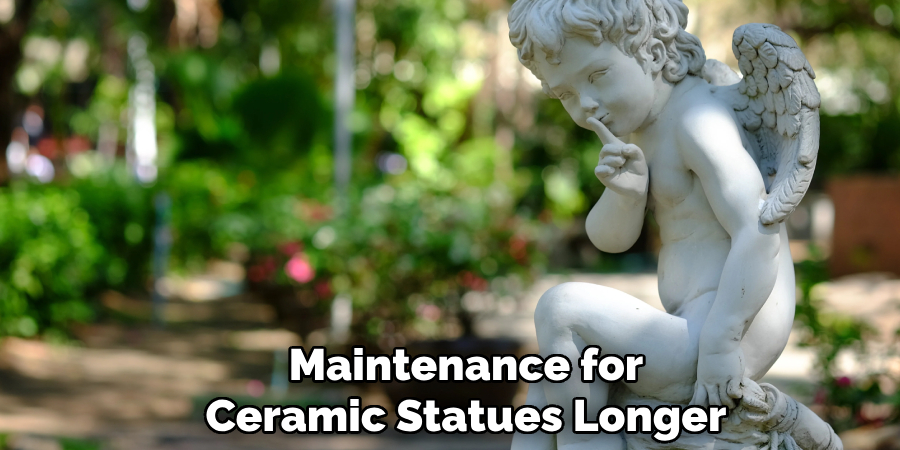Ceramic statues are timeless decorative pieces that add elegance and personality to any space. Known for their intricate details and glossy finishes, these statues often become cherished possessions in homes, offices, and gardens. However, their beauty comes with a degree of fragility, making proper care essential to preserving their appearance and preventing damage over time.

Dust, grime, and accidental wear can diminish their charm, so adopting the right cleaning practices is crucial. This article aims to provide a detailed, safe, and effective guide on how to clean ceramic statues at home. By following these tips, you can ensure your ceramic pieces remain vibrant and intact, safeguarding their value and aesthetic for years to come. With gentle care, these delicate works of art can continue to enhance your space and bring joy to those who admire them.
Understanding Ceramic Statues
What Are Ceramic Statues?
Ceramic statues are decorative or functional art pieces typically made from clay that has been molded, shaped, and hardened through a firing process. They come in two main types: glazed and unglazed ceramics. Glazed ceramics have a glass-like coating applied, which not only adds a shiny, protective finish but also enhances their aesthetic appeal.
Unglazed ceramics, on the other hand, have a more natural and matte appearance, showcasing the raw texture of the material. Common materials used in ceramic statues include earthenware, stoneware, and porcelain, each offering unique qualities in terms of durability, texture, and finish. Some statues also incorporate intricate paintwork or metallic accents to bring out stunning details.
Why Proper Cleaning Matters
Cleaning ceramic statues without proper care can lead to serious damage, including scratches, discoloration, or even chipping of the surface. Each type of ceramic requires a tailored approach to avoid harming the finish; for example, glazed ceramics may be more resistant to moisture but are prone to scratching with abrasive tools, while unglazed ceramics can easily absorb stains if mishandled.
Delicate paint finishes or intricate detailing on these statues add to their charm but demand extra attention during cleaning. Preserving these features ensures that the artistic and financial value of the statue remains intact, while maintaining its visual appeal for years to come.

Materials and Tools Needed for Cleaning
Basic Cleaning Supplies
To safely clean ceramic statues, it’s essential to gather the right supplies. Soft cloths or microfiber towels are ideal for wiping surfaces without causing scratches, while soft-bristled brushes are perfect for gently brushing away dust and grime.
Mild detergents or dish soap, when mixed with water, create a gentle cleaning solution that won’t harm the ceramic surface. For rinsing, using distilled water is recommended to prevent mineral spots from forming on the statue, maintaining its pristine appearance.
Optional Tools
For reaching small crevices and intricate details, cotton swabs prove to be incredibly useful. Similarly, toothpicks or soft toothbrushes can carefully clean delicate or hard-to-reach areas without risking damage to any fine detailing or paint.
Materials to Avoid
It is crucial to steer clear of harsh chemicals, abrasive pads, and strong solvents. These materials can strip paint, damage finishes, or erode the surface of the ceramic statue, reducing both its aesthetic appeal and structural integrity. Always opt for gentle cleaning tools and supplies to ensure the longevity and beauty of the statue.
Preparing the Ceramic Statue for Cleaning
Initial Dusting
Before cleaning, it is essential to perform an initial dusting to remove loose dirt and debris. Use a soft-bristled brush or a clean microfiber cloth to gently sweep away dust from the surface and any intricate details. Avoid applying too much pressure, as ceramic statues can be delicate, and rough handling may result in chips or cracks. Gentle handling at this stage helps preserve the statue’s integrity while preparing it for a deeper clean.
Inspection for Damage
Carefully inspect the ceramic statue for any signs of damage, such as cracks, chips, or loose parts. Pay particular attention to fragile areas like thin protrusions or fine details. Identifying damage beforehand ensures that no further harm occurs during the cleaning process and helps you determine whether professional restoration is necessary for compromised areas. If significant damage is found, it is advisable to consult a professional before proceeding with cleaning.

How to Clean Ceramic Statue: Step-by-Step Cleaning Process
Step 1: Mix a Mild Cleaning Solution
Begin by preparing a gentle cleaning solution to avoid damaging the ceramic statue. Fill a small bowl or container with warm water and add a few drops of mild dish soap. Stir the mixture gently until the soap is fully dissolved.
Ensure the solution is not too soapy, as excessive soap can leave residue and be difficult to rinse off. The goal is to create a mild and effective cleaning blend suitable for delicate surfaces.
Step 2: Cleaning the Surface
Using a soft, lint-free cloth or sponge, dip it lightly into the cleaning solution. Gently wipe the surface of the statue to remove dirt and grime. Focus on smooth, open areas first, and avoid scrubbing or applying excessive pressure.
For intricate details, crevices, or textured areas, use a soft toothbrush or cotton swabs dipped lightly in the solution. Be thorough but gentle, ensuring you clean all areas of the statue without damaging fragile parts.
Step 3: Rinsing
Once the statue is clean, rinse it off with distilled water to remove any remaining soap residue. Wet a separate, soft, and clean cloth with distilled water and gently wipe down the entire surface to remove any remaining soap residue. Do not submerge or soak the statue, as excessive water exposure can weaken glued components or damage painted areas. Instead, work carefully to ensure all traces of soap are removed while keeping the statue as dry as possible.

Step 4: Drying
To dry the statue, use a soft microfiber towel to pat the surface dry gently. Avoid rubbing to prevent scratches from appearing. After patting, place the statue in a cool, dry, and safe place where it can air dry completely. Ensure it is kept away from direct sunlight or areas with high humidity, which could lead to water spots or streaks. Allow the statue to dry thoroughly before handling or returning it to its display. This final step ensures the cleaning process is complete and the statue is protected from any unwelcome effects of moisture.
Dealing with Stubborn Stains or Mineral Deposits
Identifying Stains
Ceramic statues can accumulate various types of stains over time. Common stains include dirt buildup from prolonged exposure to dust and environmental pollutants, as well as mineral deposits caused by hard water interacting with the surface. These stains can detract from the statue’s aesthetic appeal and may require specialized cleaning techniques to restore its original beauty.
Gentle Stain Removal Techniques
For light stains or mineral deposits, create a paste by mixing baking soda with water until it reaches a thick, spreadable consistency. Using a soft, damp cloth, gently apply the paste to the stained area, working in small circular motions. Avoid using abrasive materials or excessive pressure, as these could scratch or damage the ceramic surface. After treatment, rinse the area with clean water and pat it dry with a soft towel.
When to Use Commercial Cleaners
For more persistent stains, it may be necessary to use a commercial cleaner. When selecting a cleaner, ensure it is labeled as ceramic-safe and avoid harsh chemicals that could compromise the surface.
Always test the cleaner on a small, inconspicuous area of the statue before applying it to the stain. This precaution helps prevent unintended discoloration or damage to the ceramic.
Special Considerations for Antique or Painted Ceramic Statues
Handling Antiques with Care
Antique ceramic statues require extra caution due to their fragile finishes and historical value. The delicate nature of aged ceramics means that even minor abrasions or exposure to harsh cleaning agents can result in significant damage. Additionally, their historical or sentimental significance often makes preservation a top priority.
Always handle antique pieces with clean, dry hands, or use gloves to avoid transferring oils or dirt to the surface.

Cleaning Painted or Glazed Ceramics
When dealing with painted or glazed ceramic statues, it is essential to avoid using harsh chemicals that may strip the paint or damage the glaze. Opt for gentle, non-abrasive cleaning methods, such as wiping the surface carefully with a soft, slightly dampened cloth. Avoid excessive moisture, as it can seep into unglazed areas or damage underlying paint layers. A cotton swab can be useful for cleaning intricate details without risking the overall integrity of the statue.
When to Seek Professional Help
There are times when professional cleaning or restoration is the best course of action. Signs that indicate the need for expert intervention include visible cracks, flaking paint, or deeply embedded stains that gentle cleaning methods cannot address. Restoration specialists have the expertise and tools to preserve the beauty and value of antique or painted ceramic statues without causing further harm.
Maintenance Tips to Keep Ceramic Statues Clean Longer
Proper care and maintenance can help preserve the condition and appearance of your ceramic statues for years. Here are some practical tips to keep them clean and protected:
Regular Dusting Routine
To minimize dust buildup, gently use a soft brush or a microfiber cloth to clean the statue’s surface at least once a week. This prevents debris from settling into crevices, which could become difficult to remove over time. Always work carefully to avoid applying too much pressure.
Proper Display Location
Select a suitable display location that shields your ceramic statue from excessive sunlight, which can cause fading or cracking, and high humidity levels, which may weaken its structure. Avoid areas prone to frequent dust accumulation or sudden temperature changes to maintain its integrity.

Protective Coatings
If suitable for your statue, consider applying a thin layer of protective wax or a ceramic-safe sealant. This optional step creates a barrier against minor stains and environmental factors, helping to extend the life of decorative finishes. Always consult product instructions to ensure compatibility with your ceramic piece.
Conclusion
Understanding how to clean ceramic statue properly is essential to preserving its beauty and longevity. Begin by gently removing dust with a soft cloth or brush, followed by cautious cleaning with mild soap and water, avoiding harsh chemicals. Protective coatings, when appropriate, can further shield the piece from damage.
Regular maintenance and careful handling are key to preventing wear over time. For valuable or damaged statues, always consider seeking professional advice to ensure their preservation. By following these steps, you can enjoy your ceramic statues for years to come, maintaining their decorative charm and sentimental value.
Specialization:
- Master of wheel-throwing, hand-building, and advanced glazing techniques
- Focus on creating both functional pottery and decorative art pieces
Recognition:
- Celebrated by collectors and art enthusiasts for creating one-of-a-kind pieces that blend artistry with functionality
- Participates in local and national exhibitions, earning accolades for his innovative designs and craftsmanship
Passion:
- Deeply committed to exploring and pushing the boundaries of ceramic artistry
- Continuously experiments with new materials, firing techniques, and artistic concepts to evolve his craft
Personal Philosophy:
- Believes in the transformative power of art, aiming to evoke emotions and connections through his ceramic creations
- Advocates for sustainability in ceramics, using eco-friendly materials and practices whenever possible


